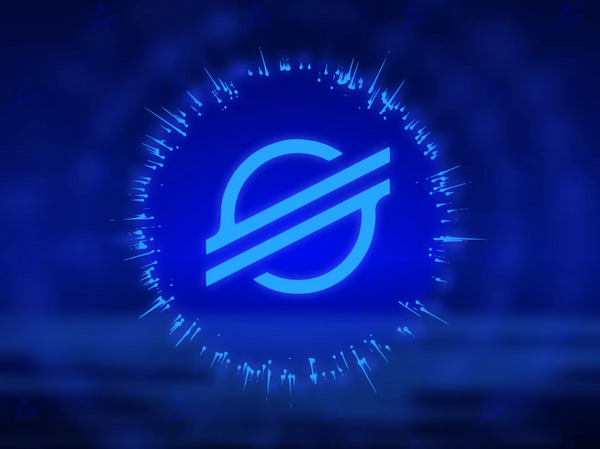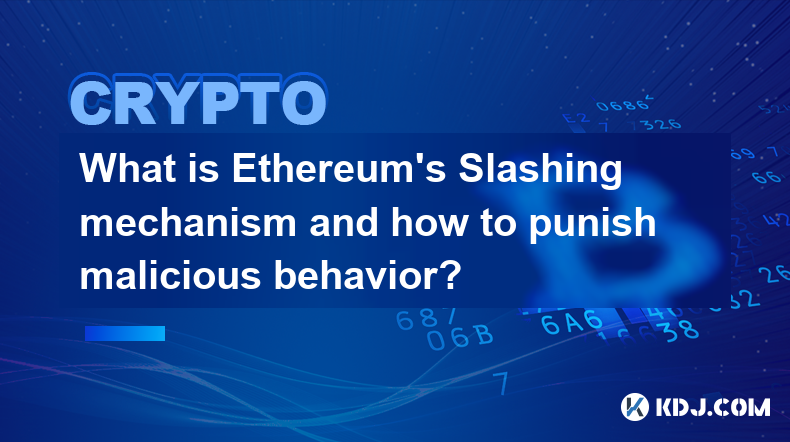-
 Bitcoin
Bitcoin $84,457.4214
0.92% -
 Ethereum
Ethereum $1,829.8451
0.55% -
 Tether USDt
Tether USDt $0.9997
-0.02% -
 XRP
XRP $2.0954
2.23% -
 BNB
BNB $598.7719
0.15% -
 Solana
Solana $118.6251
0.10% -
 USDC
USDC $1.0000
0.01% -
 Dogecoin
Dogecoin $0.1671
1.78% -
 Cardano
Cardano $0.6618
1.40% -
 TRON
TRON $0.2377
1.43% -
 Toncoin
Toncoin $3.5816
-4.06% -
 UNUS SED LEO
UNUS SED LEO $9.3756
-0.53% -
 Chainlink
Chainlink $13.1452
1.21% -
 Stellar
Stellar $0.2641
0.86% -
 Avalanche
Avalanche $18.6434
1.32% -
 Sui
Sui $2.2741
-1.61% -
 Shiba Inu
Shiba Inu $0.0...01242
1.57% -
 Hedera
Hedera $0.1653
1.39% -
 Polkadot
Polkadot $4.1060
2.62% -
 Litecoin
Litecoin $84.7956
1.36% -
 Bitcoin Cash
Bitcoin Cash $309.5484
0.86% -
 MANTRA
MANTRA $6.3338
-0.32% -
 Bitget Token
Bitget Token $4.5595
-0.31% -
 Dai
Dai $1.0001
0.01% -
 Ethena USDe
Ethena USDe $0.9996
-0.02% -
 Monero
Monero $218.5279
2.20% -
 Hyperliquid
Hyperliquid $11.9044
-0.26% -
 Uniswap
Uniswap $6.0152
0.61% -
 Pi
Pi $0.5562
-11.58% -
 Aptos
Aptos $5.0753
-2.98%
How to buy and sell XLM coin? XLM coin trading graphic tutorial
To purchase or sell Stellar Lumens (XLM), select a reputable cryptocurrency exchange that supports XLM trading and register for an account, ensuring you have verified your identity and enabled two-factor authentication for enhanced security.
Sep 30, 2024 at 12:12 pm

How to Buy and Sell XLM Coin: A Step-by-Step Trading Guide
Step 1: Choose a Cryptocurrency Exchange
- Select a reputable exchange that supports XLM trading.
- Consider factors such as security, fees, and trading volume.
- Popular exchanges include Binance, Coinbase, and Kraken.
Step 2: Register for an Account
- Create an account on the chosen exchange.
- Provide personal information (e.g., name, email address) and verify your identity.
- Enable two-factor authentication for enhanced security.
Step 3: Fund Your Account
- Deposit funds into your exchange account using fiat currency (e.g., USD, EUR) or cryptocurrency.
- Most exchanges accept bank transfers, credit/debit cards, and crypto deposits.
Step 4: Find the XLM/USD or XLM/BTC Trading Pair
- Navigate to the exchange's trading interface and locate the XLM trading pair (e.g., XLM/USD or XLM/BTC).
- The trading pair indicates the currency you're trading XLM against.
Step 5: Place a Buy or Sell Order
- Buy Order: Enter the amount of XLM you want to buy and the desired price. Choose a "Market Order" for instant execution or a "Limit Order" to specify a specific price.
- Sell Order: Enter the amount of XLM you want to sell and the desired price. Choose a "Market Order" for instant execution or a "Limit Order" to specify a specific price.
Step 6: Monitor Your Trade
- Once the order is placed, monitor its status in the exchange's trading interface.
- If a "Market Order" was placed, the trade will execute instantly.
- For "Limit Orders," the trade will execute when the market price reaches or exceeds the specified limit.
Step 7: Withdraw XLM
- Once you have bought XLM, you can withdraw it to a hardware wallet or personal cryptocurrency wallet.
- Navigate to the exchange's withdrawal interface and follow the instructions.
- Provide the destination wallet address and confirm the transaction.
Additional Tips:
- Research XLM thoroughly before buying to understand its market dynamics.
- Start with small trades and gradually increase as you gain experience.
- Use stop-loss orders to protect your profits and minimize potential losses.
- Consider using a cryptocurrency exchange app for convenience and mobile trading.
Disclaimer:info@kdj.com
The information provided is not trading advice. kdj.com does not assume any responsibility for any investments made based on the information provided in this article. Cryptocurrencies are highly volatile and it is highly recommended that you invest with caution after thorough research!
If you believe that the content used on this website infringes your copyright, please contact us immediately (info@kdj.com) and we will delete it promptly.
- XRP vs. DOGE: This Top Investor Has Made His Choice and It's Not the Memecoin
- 2025-04-04 17:30:12
- Binance Excludes PI Network from "Vote to List" Campaign
- 2025-04-04 17:30:12
- How the SEC's New Moves on Crypto ETPs Could Shape the Future of Digital Finance
- 2025-04-04 17:26:33
- MAGACOIN FINANCE Gains Traction with Early Buyers
- 2025-04-04 17:20:12
- Ryvoris Link AI Review: Cross-Exchange Trading and Straightforward Algorithm
- 2025-04-04 17:20:12
- 5 Affordable and Promising Digital Coins Gaining Ground
- 2025-04-04 17:15:11
Related knowledge

What is Ethereum’s Slashing mechanism and how to punish malicious behavior?
Feb 20,2025 at 03:08am
Key PointsOverview of slashingDifferent types of slashing in EthereumIncentives and consequences of slashingIdentifying and reporting slashed validatorsOngoing discussions and potential improvementsEthereum's Slashing Mechanism: Punishing Malicious BehaviorEthereum's slashing mechanism is an essential tool for ensuring network security and punishing mal...

What is the verifier node of Ethereum and how to become a verifier?
Feb 19,2025 at 06:00pm
The Verifier Node of Ethereum: A Comprehensive GuideKey Points:What is a Verifier Node?How to Become a Verifier NodeResponsibilities and Rewards of a Verifier NodeMinimum Requirements for Becoming a Verifier NodePotential Difficulties in Running a Verifier Node1. What is a Verifier Node?A Verifier Node is an independent entity on the Ethereum network th...

What is Ethereum’s staking, and how to participate and earn money?
Feb 19,2025 at 04:37pm
Key Points:Understanding Ethereum's Staking MechanismSteps to Participate in StakingBenefits and Rewards of StakingSecurity and Risk ConsiderationsTechnical Requirements and Hardware OptionsPotential Challenges and Troubleshooting TipsFAQs on Ethereum StakingWhat is Ethereum's Staking?Proof-of-Stake (PoS) is a consensus mechanism used in blockchain netw...

What is Ethereum’s DAO (Decentralized Autonomous Organization) and how does it work?
Feb 20,2025 at 03:12am
Key PointsDefinition and Structure of a DAOGovernance and Decision-Making in DAOsBenefits and Use Cases of DAOsChallenges and Limitations of DAOsWhat is Ethereum's DAO (Decentralized Autonomous Organization) and How Does It Work?Definition and Structure of a DAOA Decentralized Autonomous Organization (DAO) is an innovative governance and management fram...

What is Ethereum's multi-signature wallet and how to improve security?
Feb 20,2025 at 02:18pm
Key Points:Understanding the Concept of a Multi-Signature WalletBenefits and Drawbacks of Multisig WalletsRequirements for Setting Up a Multisig WalletStep-by-Step Guide to Generating a Multisig WalletImplementing Strategies for Enhanced Security1. Understanding the Concept of a Multi-Signature WalletA multi-signature (multisig) wallet in the Ethereum e...

What is Ethereum's oracle and how to provide data for smart contracts?
Feb 21,2025 at 01:30am
Key Points:Understanding the concept of oracles in EthereumExploring different types of oraclesDetailed guide on how to provide data for smart contractsAddressing potential challenges and considerationsWhat is Ethereum's Oracle?Oracles are crucial components in the Ethereum ecosystem, enabling smart contracts to access real-world data and off-chain even...

What is Ethereum’s Slashing mechanism and how to punish malicious behavior?
Feb 20,2025 at 03:08am
Key PointsOverview of slashingDifferent types of slashing in EthereumIncentives and consequences of slashingIdentifying and reporting slashed validatorsOngoing discussions and potential improvementsEthereum's Slashing Mechanism: Punishing Malicious BehaviorEthereum's slashing mechanism is an essential tool for ensuring network security and punishing mal...

What is the verifier node of Ethereum and how to become a verifier?
Feb 19,2025 at 06:00pm
The Verifier Node of Ethereum: A Comprehensive GuideKey Points:What is a Verifier Node?How to Become a Verifier NodeResponsibilities and Rewards of a Verifier NodeMinimum Requirements for Becoming a Verifier NodePotential Difficulties in Running a Verifier Node1. What is a Verifier Node?A Verifier Node is an independent entity on the Ethereum network th...

What is Ethereum’s staking, and how to participate and earn money?
Feb 19,2025 at 04:37pm
Key Points:Understanding Ethereum's Staking MechanismSteps to Participate in StakingBenefits and Rewards of StakingSecurity and Risk ConsiderationsTechnical Requirements and Hardware OptionsPotential Challenges and Troubleshooting TipsFAQs on Ethereum StakingWhat is Ethereum's Staking?Proof-of-Stake (PoS) is a consensus mechanism used in blockchain netw...

What is Ethereum’s DAO (Decentralized Autonomous Organization) and how does it work?
Feb 20,2025 at 03:12am
Key PointsDefinition and Structure of a DAOGovernance and Decision-Making in DAOsBenefits and Use Cases of DAOsChallenges and Limitations of DAOsWhat is Ethereum's DAO (Decentralized Autonomous Organization) and How Does It Work?Definition and Structure of a DAOA Decentralized Autonomous Organization (DAO) is an innovative governance and management fram...

What is Ethereum's multi-signature wallet and how to improve security?
Feb 20,2025 at 02:18pm
Key Points:Understanding the Concept of a Multi-Signature WalletBenefits and Drawbacks of Multisig WalletsRequirements for Setting Up a Multisig WalletStep-by-Step Guide to Generating a Multisig WalletImplementing Strategies for Enhanced Security1. Understanding the Concept of a Multi-Signature WalletA multi-signature (multisig) wallet in the Ethereum e...

What is Ethereum's oracle and how to provide data for smart contracts?
Feb 21,2025 at 01:30am
Key Points:Understanding the concept of oracles in EthereumExploring different types of oraclesDetailed guide on how to provide data for smart contractsAddressing potential challenges and considerationsWhat is Ethereum's Oracle?Oracles are crucial components in the Ethereum ecosystem, enabling smart contracts to access real-world data and off-chain even...
See all articles




















































































